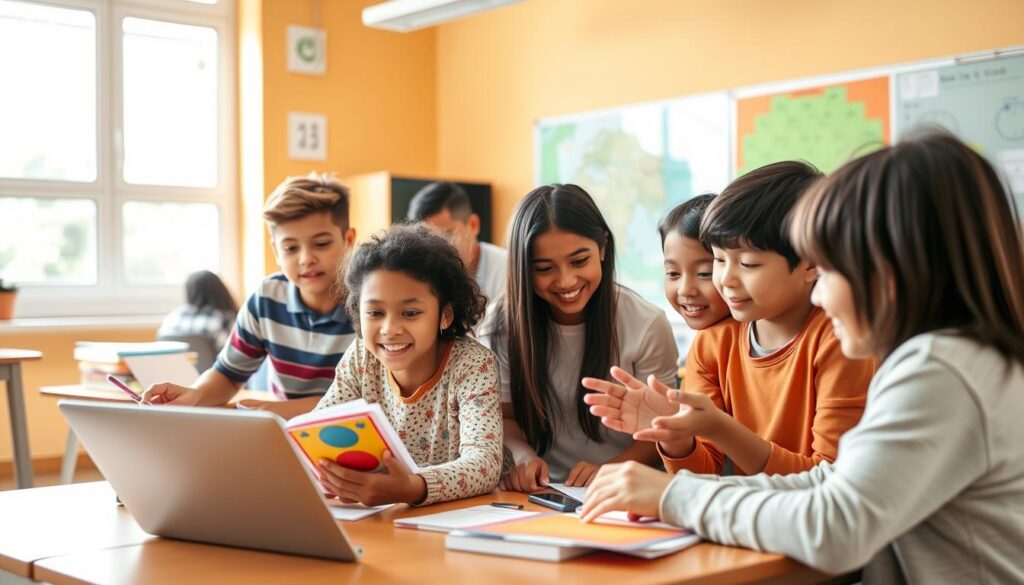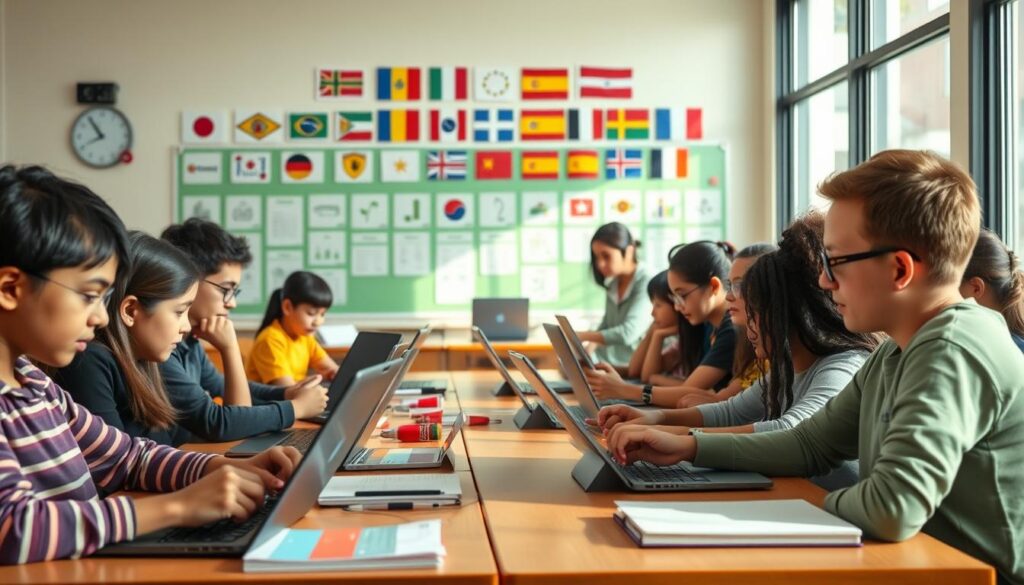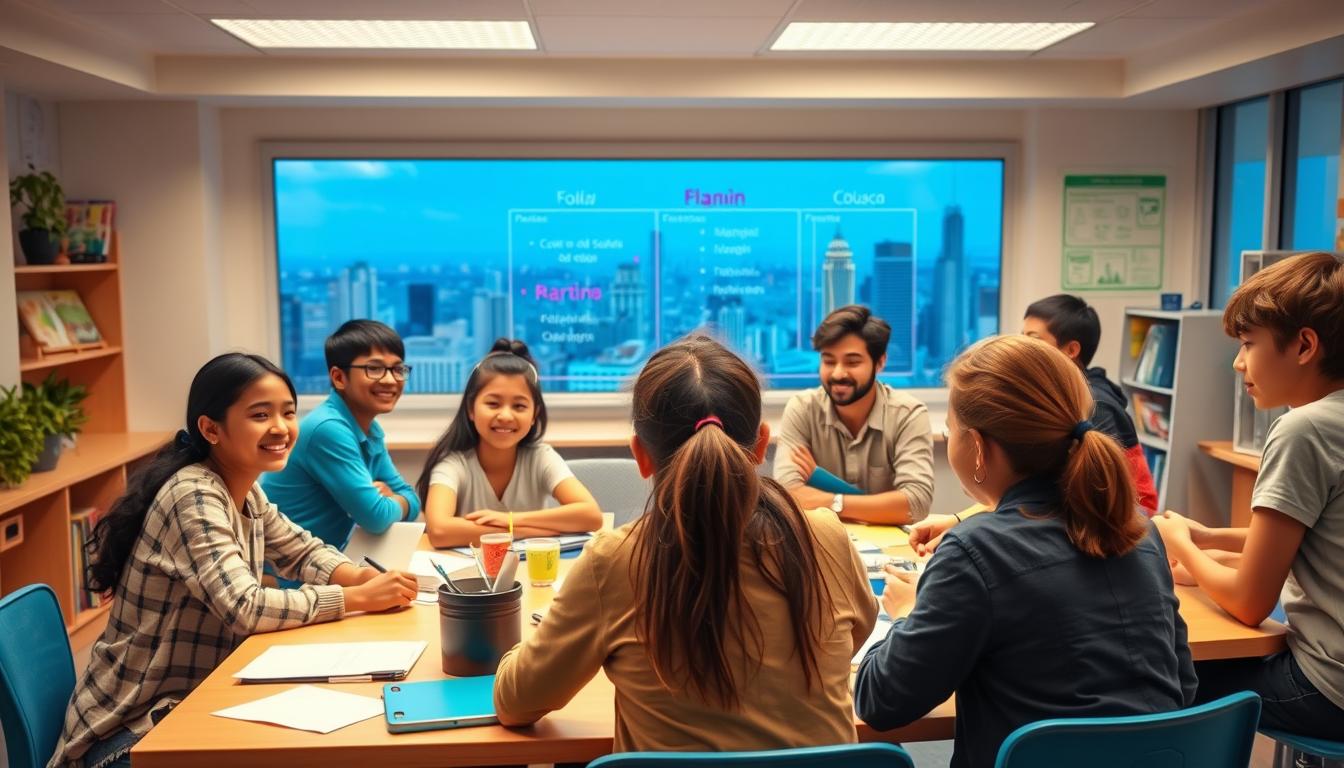Did you know that 40% of the global population lacks access to education in their native language? This staggering statistic from UNESCO highlights a critical barrier to learning worldwide. As the world becomes more interconnected, the need for multilingual education grows, ensuring everyone can access quality materials and resources.
Digital platforms are breaking geographical limits, making learning accessible to diverse populations. These tools not only bridge communication gaps but also enhance cognitive skills by teaching in native languages. Companies face challenges too, with 87% reporting workforce skills gaps, as per McKinsey. Multilingual training programs are essential to meet these needs.
Language access plays a vital role in achieving UN SDG-4 goals, promoting inclusive and equitable education. Professional translation and localization go beyond word conversion, ensuring content resonates culturally. This approach fosters a supportive learning environment, empowering individuals to thrive.
Key Takeaways For Multilingual Online Education :
- 40% of the global population lacks education in their native language.
- Digital platforms overcome geographical barriers in learning.
- 87% of companies face workforce skills gaps, per McKinsey.
- Native-language instruction boosts cognitive benefits.
- Professional translation ensures cultural relevance in education.
The Future of Multilingual Online Education
Digital tools are transforming how students access learning materials. These innovations are breaking down language barriers, making education more inclusive and accessible. With 27% of children under 6 being dual language learners, the need for multilingual solutions has never been greater.
One effective approach is the 90/50 immersion model, which balances instruction in two languages. This method not only enhances cognitive skills but also improves pattern recognition in bilingual learners. Schools across the U.S. are adopting this model, with over 3,600 dual-language programs now in place.
Technology plays a pivotal role in this transformation. Platforms like MagicBox use AI-powered video transcription to create interactive assessments. Real-time translation tools during video lessons ensure that students can learn in their native language, fostering better understanding and retention.
Family engagement is another critical factor. Strategies that involve parents and caregivers help reinforce language skills outside the classroom. This approach ensures that learning continues at home, strengthening cultural connections and community ties.
For professionals, multilingual corporate training programs are addressing workforce development needs. These programs equip employees with the skills needed to thrive in a globalized economy. As AI advances, personalized learning paths will further enhance the effectiveness of these initiatives.
To learn more about how translation is shaping the future of learning, visit our detailed guide.
Key Benefits of Multilingual Learning Platforms

Learning in multiple languages offers unique advantages for students and communities. These platforms foster cognitive growth, cultural connections, and compliance with legal standards. Let’s explore how they transform education.
Cognitive and Academic Advantages for Students
Students who learn in their mother tongue often show better vocabulary growth and academic performance. Research indicates that 56.2% of multilingual children enjoy reading across languages, enhancing their language skills and understanding.
Dual-language programs also improve pattern recognition and problem-solving abilities. These benefits extend beyond the classroom, preparing students for a globalized world.
Fostering Inclusivity and Cultural Connections
Multilingual platforms celebrate diversity and strengthen cultural ties. For example, 73.6% of children value their non-English language identity, as per the National Literacy Trust. This inclusivity supports family engagement and community development.
Heritage language preservation is another key benefit. Schools and families can work together to maintain cultural traditions while promoting academic success.
Meeting Legal and Compliance Requirements
Educational institutions must adhere to Title VI requirements, ensuring access for all students. Translated Individualized Education Programs (IEPs) improve parent-teacher collaboration, meeting legal standards while supporting student needs.
Platforms like MagicBox offer compliance tracking features, helping schools stay updated with state graduation language requirements. This ensures equitable access to education for diverse communities.
To learn more about fostering inclusivity in education, visit our detailed guide.
Overcoming Challenges in Multilingual EdTech

Creating inclusive learning environments demands overcoming key hurdles. From translating idioms to adapting materials for diverse cultures, the process is complex but essential. Let’s explore the main challenges and solutions shaping multilingual education today.
Content Localization vs. Direct Translation
Direct translation often misses cultural nuances. For example, Mandarin idioms like 马马虎虎 (so-so) can confuse learners if not localized properly. Effective language adaptation ensures content resonates with diverse communities.
Platforms like MagicBox use dynamic tools to adapt curricula in real time. This approach meets the needs of students while preserving cultural relevance. Learn more about how AI is transforming multilingual education.
Keeping Pace with Regulatory Changes
Regulations vary across U.S. states, adding complexity to multilingual education. Schools must comply with Title VI and other requirements to ensure inclusivity. Arlington Public Schools’ Dual Language Immersion (DLI) framework is a great example of meeting these standards.
Technology plays a vital role here. Real-time updates and compliance tracking tools help institutions stay ahead of regulatory changes.
Balancing Affordability and Quality
High-quality multilingual materials can be costly. Maintaining content libraries for multiple languages requires significant investment. However, public-private partnerships offer a viable solution.
These collaborations reduce costs while ensuring access to top-notch resources. They also support families and teachers in creating effective learning environments.
Conclusion About Multilingual Online Education :
Globalization demands a workforce equipped with diverse language skills. UNESCO’s equity imperative highlights the need for accessible learning opportunities for all. Leading providers now support over 7,000 languages, ensuring inclusivity in education.
Market growth for EdTech localization services is projected to rise. Corporate training programs show strong ROI, addressing workforce development needs. Early childhood investments in multilingual learning yield long-term benefits for students and communities.
Platforms like MagicBox lead the industry with AI-enhanced translation tools. Standardized assessment frameworks and VR integration in language immersion are on the horizon. Inclusive digital policies are essential for equitable education worldwide.
To explore how AI is transforming this field, visit our detailed guide.

